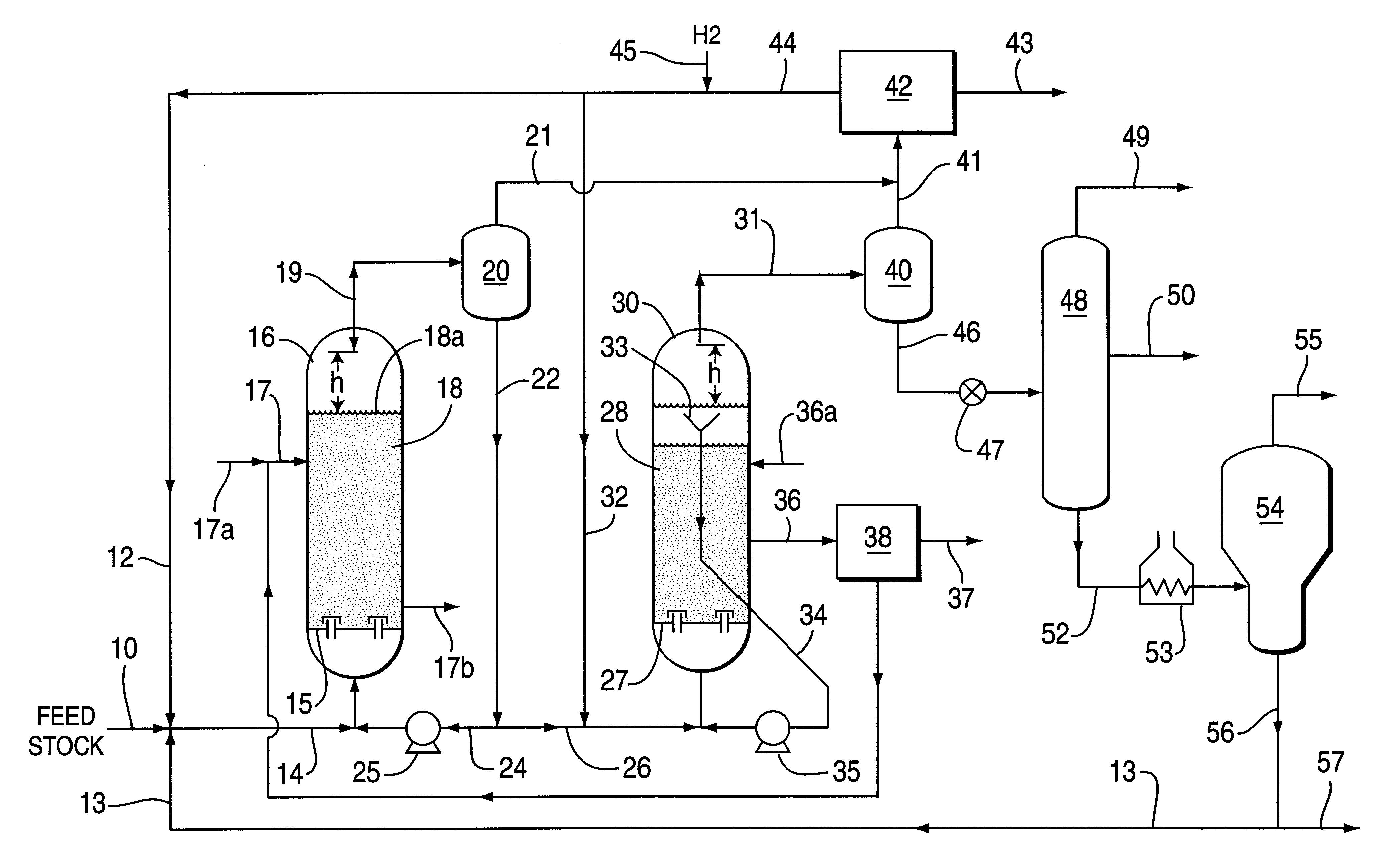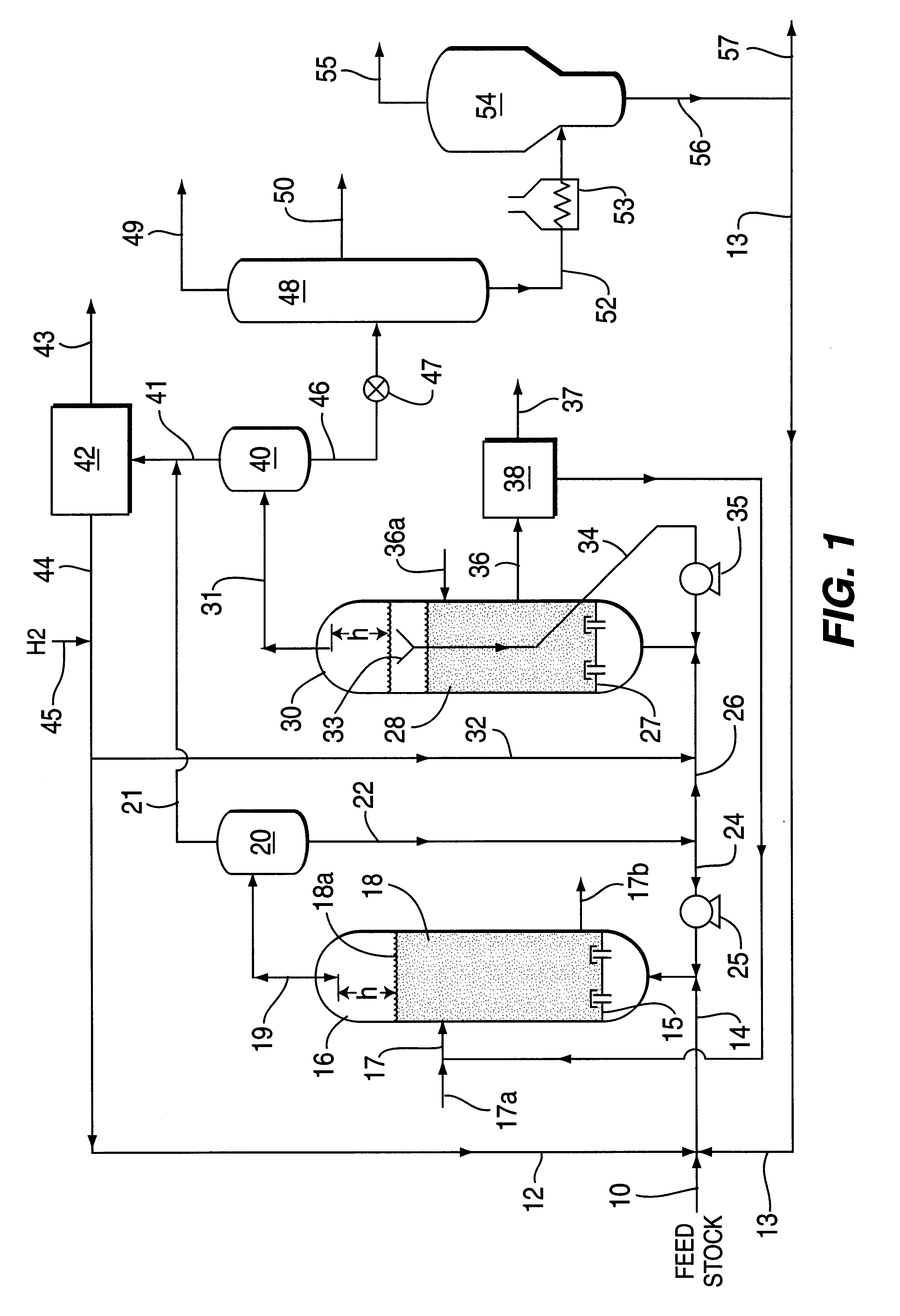Catalytic hydrogenation process utilizing multi-stage ebullated bed reactors
- Summary
- Abstract
- Description
- Claims
- Application Information
AI Technical Summary
Benefits of technology
Problems solved by technology
Method used
Image
Examples
example
To demonstrate the process advantages of this invention, analyses of four commercial ebullated-bed reactor cases have been developed and are presented below. The basis for these comparative cases is the catalytic two-stage ebullated bed reactor processing of a typical Arabian light / heavy vacuum resid feedstock and providing 65 and 90 vol. % hydroconversion of the 1050.degree. F..sup.+ vacuum residua fraction and with a high percentage level of desulfurization. The vacuum residua feedstock has inspection analyses as shown in Table 3 below.
Two conventional process base cases No. 1 and 3 which do not incorporate features of the present invention and two improvement cases No. 2 and 4 which do incorporate features of this invention have been developed, and show clearly the process performance advantages of the invention. The cases No. 1 and 2 comparisons are both for a moderate 65 vol. % overall hydroconversion of the 1050.degree. F..sup.+ vacuum residua fraction, and the cases No. 3 and...
PUM
 Login to View More
Login to View More Abstract
Description
Claims
Application Information
 Login to View More
Login to View More - R&D
- Intellectual Property
- Life Sciences
- Materials
- Tech Scout
- Unparalleled Data Quality
- Higher Quality Content
- 60% Fewer Hallucinations
Browse by: Latest US Patents, China's latest patents, Technical Efficacy Thesaurus, Application Domain, Technology Topic, Popular Technical Reports.
© 2025 PatSnap. All rights reserved.Legal|Privacy policy|Modern Slavery Act Transparency Statement|Sitemap|About US| Contact US: help@patsnap.com



